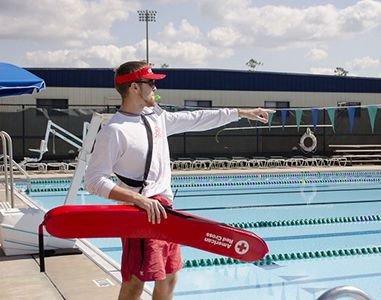When you think of a lifeguard, images of sun-soaked beaches, vibrant swimsuits, and whistle-blowing heroes come to mind life guard. But what’s it really like behind the scenes? Here’s a peek into a day in the life of a lifeguard, where vigilance meets camaraderie.

Morning Routine: Prepping for the Day
As dawn breaks, the beach is still shrouded in quiet. My day starts early, around 7 a.m. I arrive at the beach to set up my station. First things first: I check the equipment. Rescue buoys, first aid kits, and radios are all inspected to ensure they’re in top shape. Safety is our priority, and every item counts.
After setting up, I take a moment to stretch. Lifeguarding requires agility and stamina, and a good stretch helps prepare my body for the hours ahead. Plus, it’s a peaceful time to enjoy the calm before the wave of beachgoers arrives.
Mid-Morning: Watchful Eyes
By 9 a.m., the beach begins to come alive. Families spread out their towels, children splash in the shallows, and the smell of sunscreen fills the air. My position in the lifeguard tower offers a perfect vantage point. With a wide view of the water, I scan for potential hazards—strong currents, jellyfish, or swimmers who venture too far from the shore.
Communication with fellow lifeguards is crucial. We use radios to keep each other updated on any incidents or unusual activities. It’s a team effort, and knowing I can rely on my colleagues makes the job feel less daunting.
Midday: The Heat is On
As the sun climbs higher, so do the crowds. This is the busiest time of day, and it’s essential to stay sharp. I constantly monitor the water, keeping an eye out for signs of distress. Whether it’s a struggling swimmer or a child who wanders too far, I’m always ready to spring into action.
Between patrols, I engage with beachgoers. A smile and a friendly reminder about swimming safety go a long way. Educating visitors about rip currents and water safety is just as important as rescue skills. After all, prevention is the best form of safety.
Afternoon: The Unexpected
Just when you think you’ve seen it all, something happens that keeps you on your toes. In one afternoon, I might pull a child from the water who’s gone a bit too deep, or help a sunbather who fainted from heat exhaustion. Each incident reminds me of the importance of being alert and prepared.
One memorable rescue involved a group of teens playing too close to a jet ski zone. With swift communication and teamwork, we managed to guide them back to safety before anyone got hurt. It’s moments like these that reinforce why we do what we do.
Evening: Wind Down and Reflect
As the sun begins to set, the beach starts to empty. We conduct a final sweep, ensuring that no one is left behind. Once the last beachgoer has left, it’s time to clean up the station. We pack away equipment and reflect on the day’s events with our team.
Evenings often involve sharing stories over a meal—discussing funny incidents, unexpected rescues, or lessons learned. This camaraderie is one of the best parts of the job; we’re not just coworkers but a close-knit family bonded by shared experiences.
Conclusion: More Than Just a Job
Being a lifeguard is about much more than sitting in a chair and watching the waves. It’s a blend of responsibility, teamwork, and community engagement. Every day is different, filled with its own challenges and triumphs.